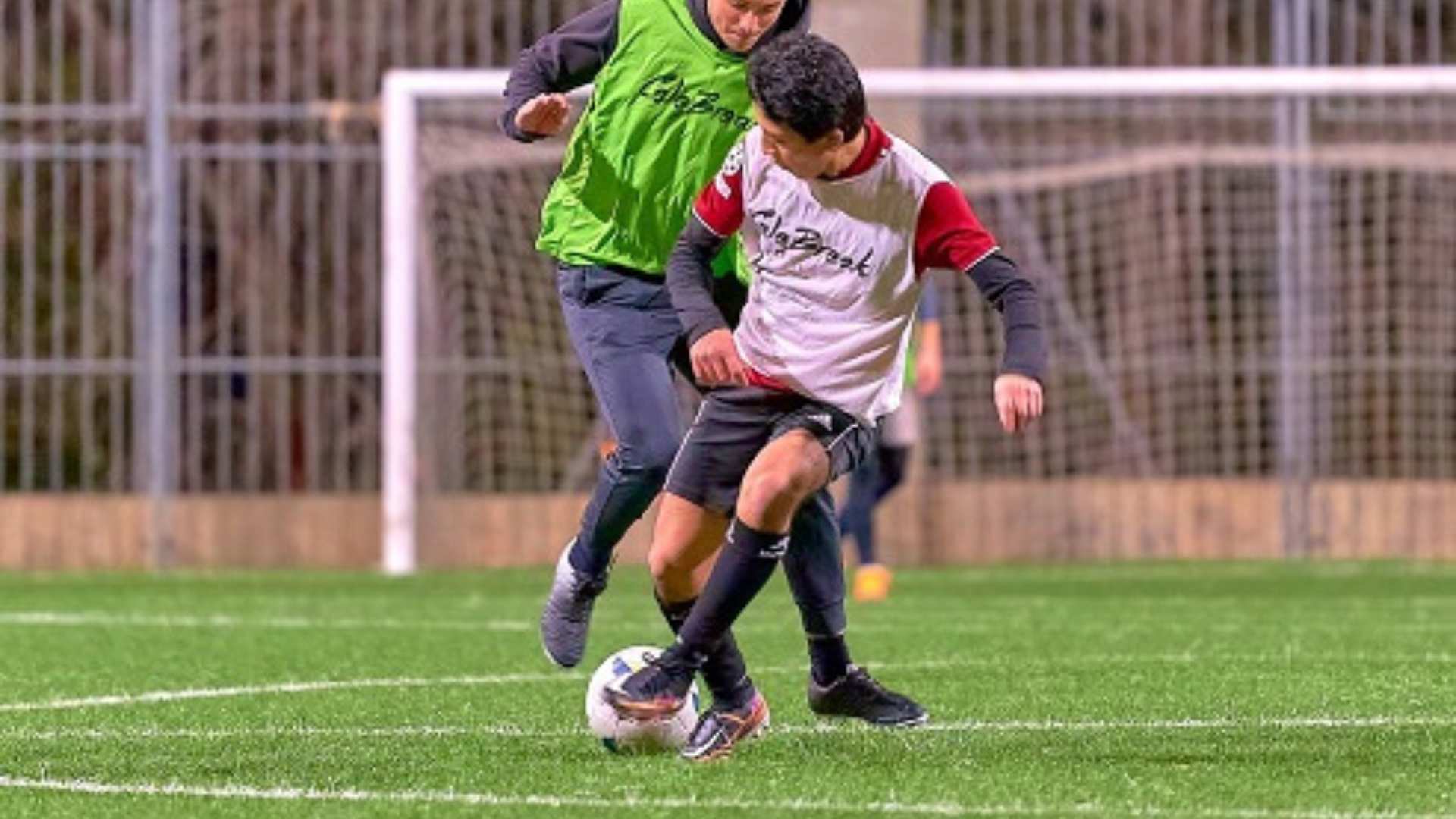Soleus injury is common in sports such as soccer, where fast movements, sudden changes in direction, and frequent jumping put this muscle under great stress.
Soccer is a sport that involves a lot of intense physical movement, such as running, jumping, and kicking, which can put considerable strain on the muscles.
The soleus is one of these muscles often overlooked but plays a critical role in these actions.
Located in the back of the leg and lower than the calves, the soleus is essential to enable these dynamic movements.
However, a soleus injury can occur when playing high-performance sports like soccer.
What is a soleus injury?
In your career as a footballer, you have likely heard of injuries at the calf level, in the triceps surae, which includes the gastrocnemius and soleus.
The soleus is a muscle that originates at the knee level and goes towards the heel, playing a fundamental role in acceleration, deceleration, and jumping movements.
A soleus injury refers to any type of damage that occurs to this muscle.
This injury can present in several forms, from a mild strain (where the muscle fibers are stretched or slightly torn) to a complete muscle tear, which can be Grade I, II, or III depending on the severity.
Typical symptoms include calf pain, swelling, bruising, and difficulty moving the foot or ankle.
Therefore, any injury to this area can significantly impact your performance.
But how do these injuries occur in soccer, and how are they treated?
Causes of soleus injuries in soccer
overload and overuse
One of soccer’s most common causes of soleus injuries is overuse or overload.
The soleus is constantly under pressure during a soccer game.
Repetitive movements, such as running, jumping, and kicking, can cause gradual wear and tear on this muscle.
For example, if you’re in the middle of a game and running at high speed to catch a ball, your soleus is under intense stress.
If these movements are repeated over multiple games and practices without proper rest, the muscle can become overworked, leading to injury.
Lack of proper heating
Warming up before any strenuous physical activity is crucial to preparing your muscles and joints for the stress they are about to endure.
Insufficient warm-up can increase the risk of injury, including soleus.
Imagine that you are about to play an important game.
Instead of doing a proper warm-up, you skip this stage and get right into the action.
In this case, you are putting your soleus, among other muscles, at risk of injury due to the sudden demand for effort without proper preparation.
Treatment of soleus injury
Rest, ice, compression, and elevation (RICE Method)
The initial treatment of this pathology includes rest, ice, compression, and elevation, known as the RICE method (Rest, Ice, Compression, Elevation).
This approach can help reduce swelling and pain and speed recovery.
Rest is vital to allow the damaged muscle to recover.
Ice can help minimize swelling and pain, while compression and elevation can also help reduce swelling.
Physiotherapy
Once the initial pain and swelling subsided, you may need physical therapy to restore muscle function.
The physiotherapist will design a rehabilitation program tailored to your needs, including strengthening exercises, stretching, and massage techniques.
For example, you may be prescribed soleus strengthening exercises, such as heel raises, to help strengthen the muscle and prevent future injury.
Also, stretching exercises can improve muscle flexibility and promote recovery.
medication and surgery
The doctor may prescribe medication to relieve pain and inflammation; surgery may be necessary in more severe cases.
If you’ve sustained a severe injury and are considering surgery, be sure to discuss all options with your doctor.
It is essential to understand the possible risks and benefits before deciding.
Prevention of soleus injury
Prevention is always the best medicine.
Here are some strategies to help you avoid soleus injuries in soccer:
heating and cooling
The proper warm-up is crucial to prepare your muscles for the effort.
Similarly, cooling down after activity can help reduce the risk of injury by gradually allowing your muscles to recover from exertion.
Strengthening and flexibility
Regular strengthening of the leg muscles can help prevent soleus injuries.
Stretching exercises are also important, as they can improve the flexibility of the muscles and reduce the risk of injury.
rest and recovery
Do not underestimate the importance of a good rest.
Make sure you have enough recovery time between matches and training sessions to allow your muscles to recover.
In summary, soleus injuries are common in soccer due to overload and overuse.
Treatment includes rest, physical therapy, and sometimes medication or surgery.
However, prevention is always the best option.
A good warm-up and cool-down, regular muscle strengthening, and adequate rest can help you avoid these injuries.
Soleus Injury Frequently Asked Questions
How long does it take to heal a soleus injury?
It depends on the severity of the injury. A mild strain may heal in a few weeks, while a complete tear may require several months.
Can I continue playing soccer with a soleus injury?
It is not recommended. Continuing to play could worsen the injury and prolong recovery time. It is essential to seek medical attention and follow rest and rehabilitation recommendations.
Is it normal to feel pain in the soleus after playing soccer?
Some degree of muscle soreness or soreness can be expected after exercise. Still, if the pain persists or is accompanied by other symptoms such as swelling or bruising, you could have a soleus injury.
Is a splint or bandage necessary for a soleus injury?
Depending on the severity of the injury, your doctor or physical therapist may recommend a splint or bandage to the area to provide support and limit movement of the injured muscle.
What kind of shoes should athletes wear to prevent a soleus injury?
You should wear shoes that offer good support and cushioning. Shoes that are too tight or loose can increase the risk of injury.
Does age influence the probability of suffering a soleus injury?
Yes, soleus injuries are more common as you age due to the natural wear and tear of the muscles and tendons. However, anyone, regardless of their age, can suffer a soleus injury, especially if they do intense physical activities such as soccer.
If you love soccer, download CeleBreak.
The CeleBreak App is available for iOS and Android operating systems, and once you download it, you sign up and play.
CeleBreak organizes daily friendly matches in different modalities, women’s, men’s, and mixed football.
In addition, you can choose the time and place that best suits your activities.
Play alone or with your friends and co-workers.
Download and play!



